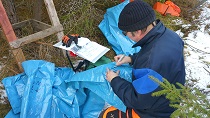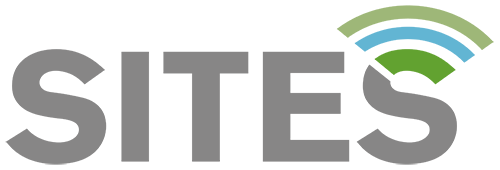Asa Research Station

Address
Station manager
Martin AhlströmE-mail: martin.ahlstrom@slu.se
Contact Station
Phone: +46472-263171E-mail: martin.ahlstrom@slu.se
https://www.slu.se/institutioner/skoglig-faltforskning/forsoksparker/asa-forsokspark/
Facilities
Station name and owner
Location
The research infrastructure has two main locations. The Asa research station with 12 employees together with the research areas Asa experimental forest and Asa high-yield experimental forest (Asa HYEF) is located 37 km N of Växjö, in the village of Asa. Together the two research areas cover 2 700 ha of forest land reaching from 165 to 285 m.a.s.l. The nearest community is Lammhult, 15 km west of Asa. The second location is Aneboda experimental area (170 ha). It is located 30 km NNW of Växjö and 4 km SW of Lammhult within the Fiolen nature reserve and consists of wetlands and coniferous forests (Natura 2000).
Climate data
Grey colours are WMO Climate Normals including maximum and minimum values. Blue colours are individual years.
Climate data for the stations where extracted via Copernicus Climate Data Store, from the global gridded reanalysis product:
ERA5 monthly averaged data on single levels from 1940 to present.
Description and source code: Roemer J.K. 2023. https://doi.org/10.5281/zenodo.10214922
Data Source: Hersbach et al. 2023. Copernicus Climate Change Service (C3S) Climate Data Store (CDS), https://doi.org/10.24381/cds.f17050d7
Biodiversity and natural environment
The research areas within SITES Asa represent a range from intensively managed to semi-natural forests. The annual mean temperature is +6.4°C and precipitation is 728 mm (452 mm during the growing season). The length of the growing season (i.e the period when the daily mean air temperature generally stays above +5˚C) is on average 194 days. Asa Experimental Forests: Approximately 80 percent of the entire area is forested. Half of this consists of spruce a quarter of the forest consists of mixed coniferous forest of spruce and pine. The remaining quarter is made up of pine and deciduous stands. The land is owned by the state forest company Sveaskog. Aneboda research area: In the central parts of Aneboda, Norway spruce forests of semi-natural character and rich in stones and bolds dominate. Bogs sparsely covered with Scots pine as well as wetlands are also within the area. In the peripheral parts of the reserve, clear-cuts and young stands of Norway spruce are found. Management should successively turn the latter into mixed stands of different ages mimicking a more natural state. The county administration board in Växjö administrates the natural reserve, while it has a mixed ownership (the state and private landowners).
History and facilities
Asa research station and Asa Experimental Forest was established in 1989 due to an increased interest in research questions specific for forestry in southern Sweden. A majority of the early research projects focused on forest regeneration, for example pine weevil damages, frost damages and browsing of roe deer. The Asa high-yield experimental forest (Asa HYEF) was established in 2009. The aim is to evaluate the potential, and effects of, intensive forestry at landscape level. The goal is to increase biomass production by 50% before the year 2050 while monitoring and evaluating the environmental impacts of intensive forest management. At the research station there are offices, laboratories, meeting room for ~12 persons, fridge- and freezer rooms, kitchen and showers. Workshop and garage are located in a separate building. Four cars, a 4wd tractor and a ATV are available at the station. Lecture halls for up to 80 persons and group rooms are available nearby. Accommodation can be booked at Asa Herrgård, hotel and restaurant located within walking distance of the research station. Accommodation can also be booked at the youth hostel in Asa. Integrated monitoring (IM) was established 1994 in a sub-catchment (19 ha) of the Aneboda research area by the Swedish Environmental Protection Agency. The site is part of the Swedish national environmental monitoring program related to the convention 'Long-range transboundary air pollution' LRTAP 1979 (UN ECE). In 2014, the county administration board in Växjö extended the area of research to 170 ha. Future research may be directed towards environmental status in semi-natural forests (reference conditions), comparisons with managed forests, methods to convert production forests to semi-natural state etc. Currently, Aneboda offers a research area, monitoring data (see below) and technical and scientific expertise, while Asa research station delivers complementing infrastructure (see above).
General research and databases
Asa experimental forest, covering 1 010 hectares is mainly used for traditional field experiments in silviculture and growth and yield research. In addition environmental monitoring of climate, stream water chemistry, green-house gases and phenology is conducted. The field experiments together with plots established for demonstration purposes is extensively used for field education, extension and other outreach activities. Data are available upon request. The Asa High Yield Experimental Forest (Asa HYEF) covering 1700 hectares is addressing the potential, and effects of, intensive forestry. The goal is to increase biomass production by 50% before the year 2050 while monitoring and evaluating the environmental impacts of intensive forest management. All growth-enhancing treatments are applied at stand level. The total area is 1700 ha of which 52 ha have been fertilized (2014) according to a young forest fertilization program. Fertilized areas increase every second year when new areas rea added into the fertilizing program. Furthermore, genetically improved spruce seedlings as well as introduced tree species are being planted. Stream water quality is monitored in a program covering 11 stream waters with year-round flow. Continuous water level and temperature measurements are conducted together with monthly water sampling for chemistry analysis. Asa HYEF offers unique opportunities to study large-scale potential and effect of intensive forestry. Data are available upon request. Aneboda experimental area (170 ha) is located within the Fiolen nature reserve and consists of wetlands and coniferous forests (Natura 2000). The storm Gudrun with subsequent bark beetle infestation has since 2005 changed parts of the old spruce dominated area to grasses, shrubs, small trees and enormous amounts of large woody debris. Since 1994, research and integrated monitoring (IM) are conducted in 19 ha of a non-managed forested sub-catchment within the experimental area. The monitoring is related to the UN ECE Convention on Long-range Tranboundary Air Pollution and funded by the Swedish Environmental Protection Agency. The focus is on ecosystem studies at catchment level with measurements of water balances, budgets of chemical constituents and impacts on biota, mainly vegetation, as well as studies of soil processes. The objectives are to provide relevant background data from a reference area, and to distinguish the effects of changing climate and air pollution from natural variation. Results from research and monitoring are used to develop and test models with a focus on climate change and potential effects of forest management. The research area is well suited for experimental studies of status, processes and dynamics in non-managed forests and to act as reference to conventional and intensively managed forests at e.g. SITES Asa. Future research may also be directed towards methods to convert production forests to a semi-natural state.
Link to data: https://dataportal.eu-interact.org/stations
Station Monitoring
Human dimension
Asa research station is located beautify by the Asa lake in the vicinity of Asa mansion dating from the 14th century. The surroundings are suitable for outdoor activities e.g. fishing, canoeing, trekking and biking. The nearest restaurant is Asa Herrgård, 50 m from the Research Station and the nearest grocery store is located in Lammhult 15 km west of Asa.
Access
The easiest way to get to Asa research station and Aneboda IM is by car. If you are a long-distance traveler you can fly to Växjö Småland airport, and get a rental car from there. Another alternative is to go by train to Alvesta or Lammhult. Rental cars can be found in Alvesta, but not in Lammhult. Distance to Asa research station: Växjö; Småland airport 40 km (45 minutes), Alvesta train station 45 km (50 minutes), Lammhult train station 15 km (20 minutes)

